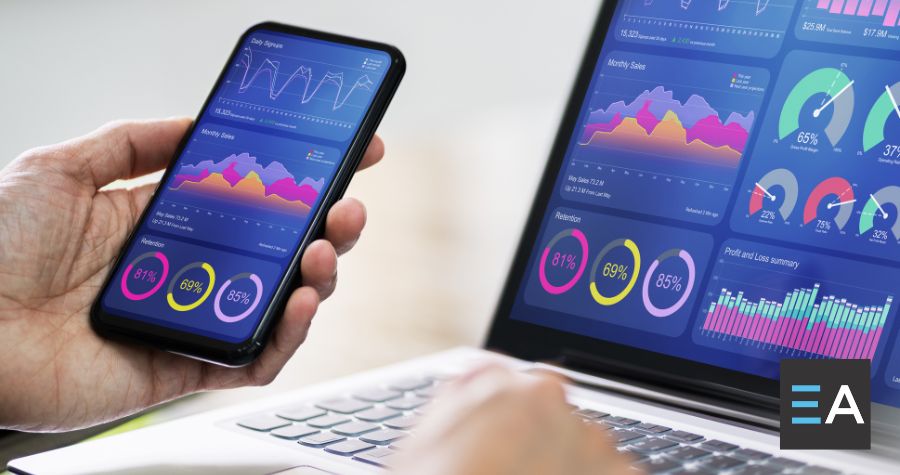
Designing a Killer Author Website: Tips and Tricks
July 21, 2023
Hungry For More:
July 24, 2023Using Analytics to Track Your Self-Publishing Success
For self-publishers, tracking the success of your writing can often be a difficult and intimidating task. Fortunately, analytics are here to help you gain an understanding of how effective your work is. By delving deeper into reader engagement data, you can make strategic changes that will improve your content’s performance and pave the way for long-term success as a self-publisher.
Click here to get a quote on publishing services.
Introducing the basics of self-publishing analytics
Before taking the plunge self-publishing your own book, it’s important to understand the analytics behind self-publishing. Analytics provide valuable insights into your readership, sales and marketing strategy, and overall success. With self-publishing analytics, you can track and analyze important metrics like book sales, author earnings, and reader engagement to optimize your book’s impact. Whether you’re looking to expand your reach or simply gauge your book’s success, self-publishing analytics are essential for any self-published author.
Understanding the different metrics used in self-publishing analytics
Self-publishing has opened up a whole new world for authors, but it also comes with a steep learning curve when it comes to understanding analytics. With terms like conversion rate, read-through rate, and KENP, it’s easy to feel overwhelmed and unsure of what it all means. However, taking the time to understand these metrics is crucial for making informed decisions about your book and marketing strategy. Conversion rate tells you how many people are buying your book after visiting your sales page, while read-through rate shows how many readers are continuing your series beyond the first book. KENP, or Kindle Edition Normalized Pages, calculates the number of pages read within your book to determine your royalties. Knowing these metrics can be the difference between success and failure in the self-publishing world, and taking the time to get familiar with them is well worth the effort.
Setting up your self-publishing analytics platform
Self-publishing can be a highly rewarding endeavor, but in order to maximize its potential, it’s important to have a solid analytics platform set up. By tracking key metrics like sales, audience demographics, and marketing effectiveness, you can identify your strengths and weaknesses and make informed decisions about future publishing plans. There are many options available for setting up analytics on your self-published work, including Google Analytics and Amazon‘s Author Central. By taking the time to select the platform that works best for you and learning how to use it effectively, you’ll be well-equipped to take your self-publishing game to the next level.
Utilizing data to make better decisions for your book
As an author, making decisions about your book can be overwhelming—from the plotline to the cover design. However, utilizing data can help take the guesswork out of these important decisions. By analyzing reader trends and demographics, you can tailor your book to your audience’s preferences and increase the chances of success. Utilizing data can also help you make decisions about marketing and promotion, ensuring that you are reaching the right people with the right message. So why not take advantage of the abundance of data available to make informed decisions about your book? It just might be the missing piece to taking your writing to the next level.
Leveraging insights from self-publishing analytics to drive marketing strategies
As the self-publishing industry continues to grow, the need for effective marketing strategies also increases. Publishers and authors alike are looking for ways to leverage the valuable insights that can be derived from self-publishing analytics to drive their marketing initiatives. The vast amounts of data that can be collected through self-publishing platforms provide a unique opportunity to gain a deeper understanding of reader behaviors and preferences. This, in turn, can help authors and publishers make more informed decisions about their marketing efforts and improve their chances of reaching their target audience. With the right insights, self-publishing analytics can be a powerful tool that can help take marketing strategies to the next level.
Implementing automation to achieve optimal results with your self-publishing analytics
The world of self-publishing can be a bit of a minefield, with so many different factors and metrics to consider when trying to achieve optimal results. That’s why automation has become an increasingly popular option for those looking to streamline their approach and maximize their analytics. With automated analytics tools at your disposal, you can save time and effort while gaining a deeper understanding of your publishing strategy and how it’s performing. From tracking sales and marketing metrics to identifying gaps in your content strategy, automation can give you the insights you need to make better decisions and take your self-publishing game to the next level.
Self-publishing analytics can provide you with valuable insights about your book’s performance and help you make better decisions when optimizing your book. This tool can also help you craft more efficient marketing strategies for your book. To get the most out of self-publishing analytics, it’s important to understand its different metrics and set up the right tracking platform. Automating a book’s analytics processes is also essential in order to achieve optimal success. When done correctly, utilizing data from self-publishing analytics can give you a significant advantage. If you have detailed questions about this topic or are looking for help using your self-publishing analytics platform, contact Elite Authors and their team of expert consultants. With them by your side, you’ll be able to make informed decisions and optimize the output of your self-published book without wasting any time.



